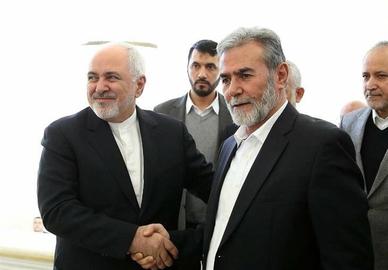At least 180 restaurants have been forced to close in Tehran because of the prohibitive costs of ingredients. Pedram’s Pizzeria in the capital’s underprivileged south is one of them. “At first I had workers but after a while I had to bring in the family to work,” says Hossein, the owner of the little restaurant. “We prepared the ingredients at home during the night and during the day I ran the shop with the help of my wife. Taking orders and delivering them was up to me and when we had orders for delivery I would deliver them on my motorcycle.”
Hossein, a middle-aged man, has two daughters in college.“I had the shop for two years and when the ingredients became more expensive we had to increase pizza prices a little bit. The orders dropped a lot,” he says. “Of course, people in southern Tehran cannot afford fancy food. There were families who came here to eat but three of them only ordered a small pizza and potatoes.”
On February 16, Ali Asghar Mir Ebrahimi, the president of Tehran Restaurateurs Union, reported that a fourth of Tehran’s restaurants have closed shop because of the high prices of meat and other ingredients [Persian link]. “The situation is unprecedented,” he said. “This year we have witnessed a drop in the number of restaurant patrons, so much so that from the 700 hundred registered restaurants in Tehran, 180 have informed us that they want to return their permits.”
Behrouz has a kebab shop on Tehran’s Baharestan Square. He used to sell samovars but ended up putting them in storage, because "nobody was buying them anymore,” he says. “The kebab business was good to start with but even this business is now in a slump.”
Behrouz buys frozen meat from the wholesale grocery market and uses it to make ground kebab. “I give my customers good meat,” he says. “My mother and I stand in line for a long time to get this meat. Other colleagues grind meat scraps, fat, bread and soya but I like to give my customers good kebab. Nevertheless, we do not have many customers. People do not dare to eat ground kebab because they have heard so many times that they contain ground meat from dogs and donkeys.”
Hoarding Frozen Meat
A few hours after I talked to Behrouz, it was reported that the sale of frozen meat in wholesale grocery markets had been suspended “until further notice” because, according to various sources, it was being hoarded by some people. It was not clear from where restaurateurs like Behrouz were now supposed to buy their meat.
The story is a little different in some of the deluxe restaurants in northern Tehran. Owners of these restaurants say they refuse to sacrifice the quality of their dishes to the high price of meat.
“We still buy fresh meat,” says the owner of one of these restaurants, which is always full of customers. “Last month we increased the prices of meat dishes by 25 percent. Maybe we have lost one percent of our customers for steak, shashlik and meat dishes but it is not noticeable because, all together, our clientele are well-off.”
I also spoke to the owner of a catering service. “Fortunately we had contracts with good and sound companies so we did not suffer a loss. Of course we had delivered food for individual customers as well but after we raised prices the number of individual customers fell so much that, practically, we are no longer doing it. We concentrated all of our efforts on serving companies that are bigger and more reliable.”
“We acquire good and fresh meat,” the catering businessman says. “The difference between the price of fresh meat and frozen meat is about 40,000 tomans [$10] but the dishes that we serve the companies are mostly khoresh [Iranian sauces made of meat and vegetables served with rice] and when we add around 65 grams of meat to khoresh, it is not worth it to lose our customers for 2,000 tomans [50 cents]” by using frozen meat.”
However, in answer to one of its customers who asked about the increase in its prices, the Instagram page of Ashkbous Restaurant, which has two branches in Tehran, replied: “The prices of meat and chicken have doubled. We stand in the line at the slaughterhouse from 4am and beg them to sell us meat. I can predict with confidence that perhaps half of Tehran restaurants will close by Nowruz [the start of the Iranian new year, March 21]. We go to a lot of trouble to buy meat. Shashlik meat has gone up from 57,000 tomans to 93,000 per kilo [between $14 and $23] and if things go on this way, by Nowruz we will close down both branches, and this means that 73 people will lose their jobs.”
Another restaurant owner outside Tehran said he tried to do what he could to save his business, but it was impossible.“First we raised the prices a little bit and then we laid off workers,” he says, “but eventually we saw that the restaurant only meant expenses — from taxes to water, electricity and so on. So we closed it. You can only sell falafels in this country!”
Related Coverage:
Can Iran Survive Record Inflation?, February 25, 2019
Poverty in Iran: An Introduction, February 5, 2019
Revealed: Absolute Poverty in Iran, December 7, 2018
Could a 20% Salary Increase Help State Employees?, December 5, 2018
Iran Rushing Toward 30 Percent Inflation, November 27, 2018
, October 30, 2018
Runaway Inflation and the Nationwide Trucker Strike, October 4, 2018
Families and Fishermen Lose Out as Prices Rise, October 1, 2018
Can Iran Survive the Inflation Hike?, August 29, 2018
Iranian Protesters: Death to High Prices!, July 31, 2018

























comments